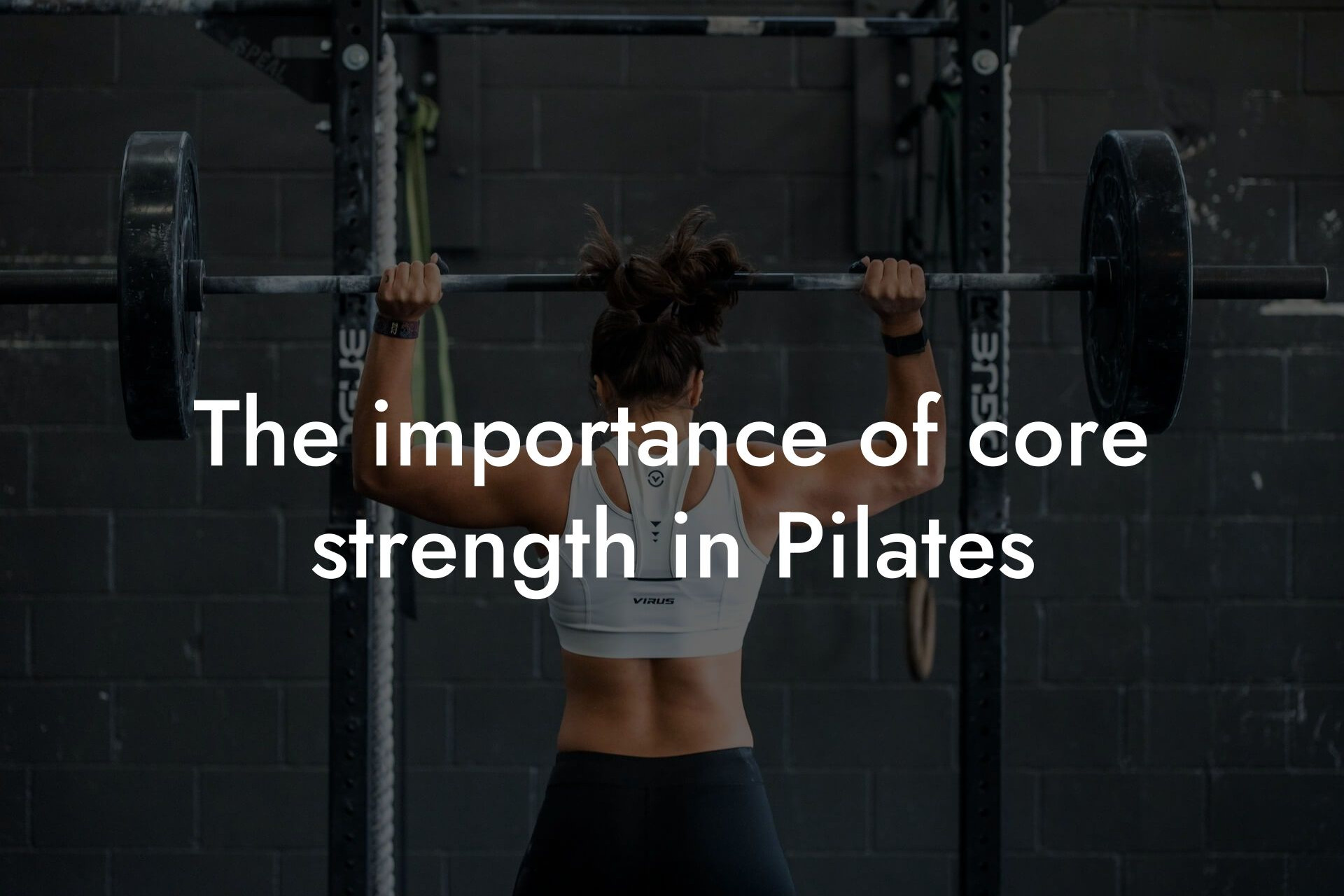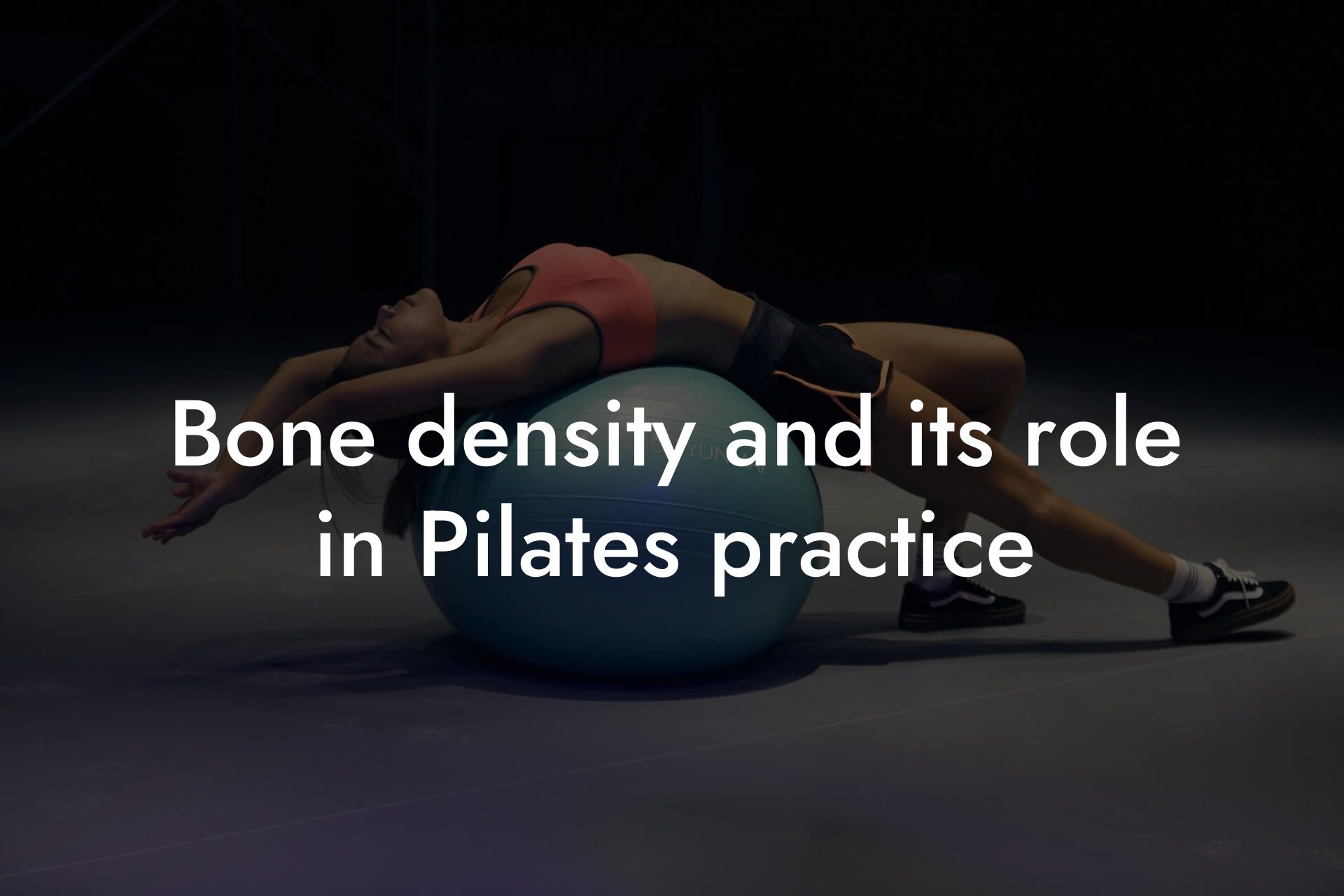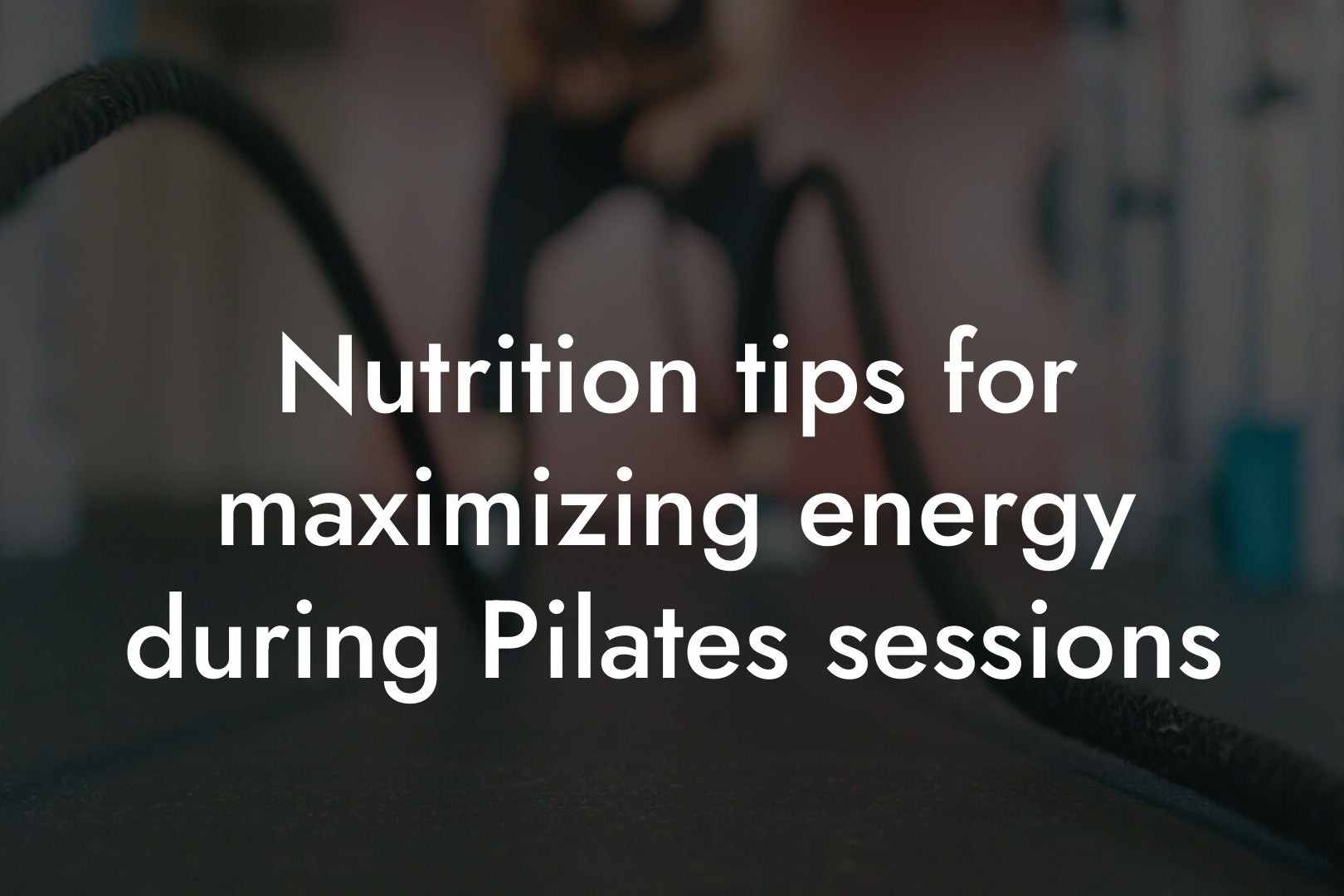As a Pilates practitioner, you understand the importance of taking care of your body to maintain optimal performance and prevent injuries. Recovery is a crucial aspect of any exercise routine, and Pilates is no exception. In this article, we will explore the importance of recovery strategies for Pilates practitioners and provide you with practical tips to incorporate into your daily routine.
Table of Contents
- Why Recovery is Crucial for Pilates Practitioners
- Types of Recovery Strategies for Pilates Practitioners
- Active Recovery Strategies for Pilates Practitioners
- Passive Recovery Strategies for Pilates Practitioners
- Restorative Recovery Strategies for Pilates Practitioners
- Nutritional Recovery Strategies for Pilates Practitioners
- Sample Recovery Routine for Pilates Practitioners
- Frequently Asked Questions
Why Recovery is Crucial for Pilates Practitioners
Recovery is essential for Pilates practitioners because it allows your body to repair and adapt to the physical demands of the exercise. Pilates is a low-impact form of exercise, but it can still cause micro-tears in the muscles, tendons, and ligaments. If you don't allow your body time to recover, you may experience fatigue, decreased performance, and increased risk of injury. Additionally, recovery helps to reduce muscle soreness, improve flexibility, and enhance overall physical performance.
Types of Recovery Strategies for Pilates Practitioners
There are several types of recovery strategies that Pilates practitioners can use to aid in their recovery. These include:
1. Active Recovery: This involves engaging in low-intensity exercises, such as light cardio or stretching, to promote blood flow and reduce muscle soreness.
2. Passive Recovery: This involves using tools, such as foam rollers or massage balls, to release tension in the muscles and improve circulation.
3. Restorative Recovery: This involves using techniques, such as deep breathing or meditation, to reduce stress and promote relaxation.
4. Nutritional Recovery: This involves fueling your body with the right nutrients to aid in muscle repair and recovery.
Active Recovery Strategies for Pilates Practitioners
Active recovery strategies are an excellent way to promote blood flow and reduce muscle soreness after a Pilates workout. Some examples of active recovery strategies include:
1. Light Cardio: Engage in low-intensity cardio exercises, such as walking or cycling, to promote blood flow and reduce muscle soreness.
2. Stretching: Perform static stretches or dynamic stretches to improve flexibility and reduce muscle tension.
3. Yoga or Pilates Modified: Engage in modified Pilates or yoga exercises that are low-impact and gentle on the joints.
Passive Recovery Strategies for Pilates Practitioners
Passive recovery strategies are an excellent way to release tension in the muscles and improve circulation. Some examples of passive recovery strategies include:
1. Foam Rolling: Use a foam roller to release tension in the muscles and improve circulation.
2. Massage: Use a massage ball or have a professional massage therapist work on releasing tension in the muscles.
3. Heat or Cold Therapy: Apply heat or cold packs to the affected area to reduce inflammation and promote relaxation.
Restorative Recovery Strategies for Pilates Practitioners
Restorative recovery strategies are an excellent way to reduce stress and promote relaxation. Some examples of restorative recovery strategies include:
1. Deep Breathing Exercises: Engage in deep breathing exercises to reduce stress and promote relaxation.
2. Meditation: Practice meditation to reduce stress and promote relaxation.
3. Progressive Muscle Relaxation: Engage in progressive muscle relaxation to release tension in the muscles and promote relaxation.
Nutritional Recovery Strategies for Pilates Practitioners
Nutritional recovery strategies are an essential aspect of recovery for Pilates practitioners. Some examples of nutritional recovery strategies include:
1. Protein Shakes: Consume protein shakes within 30-60 minutes after a workout to aid in muscle repair and recovery.
2. Complex Carbohydrates: Consume complex carbohydrates, such as whole grains or fruits, to replenish energy stores and aid in muscle recovery.
3. Healthy Fats: Consume healthy fats, such as nuts or seeds, to aid in muscle recovery and reduce inflammation.
Sample Recovery Routine for Pilates Practitioners
Here is a sample recovery routine that Pilates practitioners can follow:
Immediately After Workout:
- Stretch for 10-15 minutes to reduce muscle soreness and improve flexibility
- Consume a protein shake to aid in muscle repair and recovery
Within 30-60 Minutes After Workout:
- Engage in light cardio, such as walking or cycling, to promote blood flow and reduce muscle soreness
- Use a foam roller or massage ball to release tension in the muscles and improve circulation
Before Bed:
- Engage in deep breathing exercises or meditation to reduce stress and promote relaxation
- Consume a balanced meal that includes complex carbohydrates, healthy fats, and lean protein to aid in muscle recovery and repair
In conclusion, recovery is a crucial aspect of any exercise routine, including Pilates. By incorporating active, passive, restorative, and nutritional recovery strategies into your daily routine, you can reduce muscle soreness, improve flexibility, and enhance overall physical performance. Remember to listen to your body and adjust your recovery routine as needed. With consistent practice and patience, you can optimize your recovery and take your Pilates practice to the next level.
At Tano Performance Group, we understand the importance of recovery and provide our clients with comprehensive body assessments using our state-of-the-art DEXA machine. Our team of experts will work with you to create a personalized recovery plan that meets your unique needs and goals. Contact us today to learn more about our services and take the first step towards optimizing your recovery.
Frequently Asked Questions
What is the importance of recovery strategies for Pilates practitioners?
As a Pilates practitioner, incorporating recovery strategies into your routine is crucial to optimize your physical performance, prevent injuries, and maintain overall well-being. Recovery strategies help your body repair and adapt to the physical demands of Pilates, allowing you to perform at your best and achieve your fitness goals.
Why is it essential to prioritize recovery in Pilates?
Prioritizing recovery in Pilates is vital because it helps to reduce muscle soreness, improve flexibility, and enhance overall physical function. Neglecting recovery can lead to fatigue, decreased performance, and increased risk of injury, ultimately hindering your progress and goals.
What are some common signs of poor recovery in Pilates?
Common signs of poor recovery in Pilates include persistent muscle soreness, fatigue, decreased flexibility, and poor performance. If you're experiencing any of these symptoms, it may be a sign that you need to reassess your recovery strategies and make adjustments to optimize your physical performance.
How can I incorporate recovery strategies into my Pilates routine?
Incorporating recovery strategies into your Pilates routine can be as simple as adding 10-15 minutes of stretching or foam rolling after your workout, or taking rest days as needed. You can also try techniques like active isolated stretching, self-myofascial release, and contrast showers to aid in recovery.
What is active isolated stretching, and how can it benefit Pilates practitioners?
Active isolated stretching is a technique that involves contracting the muscle opposite to the one being stretched, allowing for a deeper and more effective stretch. This technique can benefit Pilates practitioners by increasing flexibility, reducing muscle tension, and improving overall range of motion.
How does self-myofascial release benefit Pilates practitioners?
Self-myofascial release, often performed with tools like foam rollers or lacrosse balls, helps to release tension in the muscles and surrounding connective tissue. This can benefit Pilates practitioners by reducing muscle soreness, improving circulation, and enhancing overall physical function.
What is contrast showering, and how can it aid in recovery?
Contrast showering involves alternating between hot and cold water temperatures to create a pumping effect that helps to reduce inflammation and promote recovery. This technique can aid in recovery by reducing muscle soreness, improving circulation, and enhancing overall physical function.
How often should I take rest days as a Pilates practitioner?
The frequency of rest days depends on individual factors such as training intensity, frequency, and overall physical condition. As a general rule, taking one or two rest days per week can help to allow your body to recover and adapt to the physical demands of Pilates.
What are some common mistakes Pilates practitioners make when it comes to recovery?
Common mistakes Pilates practitioners make when it comes to recovery include neglecting to stretch or foam roll, not taking rest days, and pushing through pain or discomfort. These mistakes can lead to poor recovery, decreased performance, and increased risk of injury.
How can I optimize my nutrition to support recovery in Pilates?
Optimizing your nutrition to support recovery in Pilates involves consuming a balanced diet rich in protein, complex carbohydrates, and healthy fats. Additionally, staying hydrated by drinking plenty of water and incorporating recovery-specific supplements like protein shakes or creatine can also aid in recovery.
What role does sleep play in recovery for Pilates practitioners?
Sleep plays a critical role in recovery for Pilates practitioners, as it allows your body to repair and adapt to the physical demands of Pilates. Aim for 7-9 hours of sleep per night to optimize your recovery and physical performance.
Can Pilates be used as a recovery tool?
Yes, Pilates can be used as a recovery tool by modifying exercises to focus on gentle, low-impact movements that promote relaxation and flexibility. This can help to reduce muscle tension, improve circulation, and enhance overall physical function.
How can I incorporate Pilates into my recovery routine?
Incorporating Pilates into your recovery routine can be as simple as adding one or two gentle Pilates sessions per week, focusing on exercises that promote relaxation and flexibility. You can also try incorporating Pilates-based stretching exercises into your daily routine.
What are some common misconceptions about recovery in Pilates?
Common misconceptions about recovery in Pilates include the idea that recovery is only necessary for high-intensity activities, or that stretching and foam rolling are only necessary for athletes. In reality, recovery is essential for all Pilates practitioners, regardless of intensity or fitness level.
How can I track my recovery progress as a Pilates practitioner?
Tracking your recovery progress as a Pilates practitioner can be as simple as monitoring your muscle soreness, flexibility, and overall physical function. You can also use tools like heart rate variability monitoring or recovery apps to track your progress and make adjustments to your recovery strategies as needed.
What are some recovery strategies that are specific to Pilates?
Recovery strategies specific to Pilates include incorporating exercises that target the core and pelvic floor, as well as focusing on exercises that promote flexibility and relaxation in the shoulders and hips. Additionally, using props like foam rollers or resistance bands can also aid in recovery.
How can I balance my Pilates practice with other forms of exercise?
Balancing your Pilates practice with other forms of exercise involves listening to your body and adjusting your training schedule as needed. Aim to allow for at least one or two rest days per week, and prioritize recovery strategies to ensure optimal physical performance.
What are some common injuries that can occur in Pilates, and how can recovery strategies help prevent them?
Common injuries that can occur in Pilates include strains, sprains, and overuse injuries. Recovery strategies like stretching, foam rolling, and taking rest days can help prevent these injuries by reducing muscle tension, improving flexibility, and enhancing overall physical function.
How can I modify my Pilates practice to accommodate injuries or chronic conditions?
Modifying your Pilates practice to accommodate injuries or chronic conditions involves working with a qualified instructor to develop a customized program that takes into account your individual needs and limitations. This can help to reduce the risk of further injury and promote optimal physical function.
What role does mental recovery play in Pilates?
Mental recovery plays a critical role in Pilates, as it allows you to manage stress, reduce anxiety, and promote overall well-being. Techniques like meditation, deep breathing, and visualization can aid in mental recovery and enhance overall physical performance.
How can I incorporate mental recovery strategies into my Pilates routine?
Incorporating mental recovery strategies into your Pilates routine can be as simple as taking a few minutes to meditate or practice deep breathing before or after your workout. You can also try incorporating visualization exercises into your daily routine to aid in mental recovery.
What are some common benefits of prioritizing recovery in Pilates?
Common benefits of prioritizing recovery in Pilates include improved physical performance, reduced muscle soreness, enhanced flexibility, and overall improved well-being. By prioritizing recovery, you can optimize your physical performance and achieve your fitness goals.
Here are some related articles you might love...
- The importance of core strength in Pilates
- Bone density and its role in Pilates practice
- Nutrition tips for maximizing energy during Pilates sessions
- How body composition impacts Pilates performance
- Using DEXA scans to optimize Pilates training
- How to integrate Pilates into a balanced fitness routine
- Reducing body fat for improved Pilates results
- Maintaining flexibility and muscle tone with Pilates
- Pilates for injury prevention and rehabilitation
Zak Faulkner
Zak Faulkner is a leading authority in the realm of physical health and body composition analysis, with over 15 years of experience helping professionals optimise their fitness and well-being. As one the experts behind Tano Performance Group, Zak has dedicated his career to providing in-depth, science-backed insights that empower clients to elevate their physical performance and overall health.
With extensive knowledge of DEXA technology, Zak specializes in delivering comprehensive body assessments that offer precise data on body fat, muscle mass, bone density, and overall physique. His expertise enables individuals to make informed decisions and achieve their fitness goals with accuracy and confidence. Zak’s approach is rooted in a deep understanding of human physiology, combined with a passion for helping clients unlock their full potential through personalised strategies.
Over the years, Zak has earned a reputation for his commitment to excellence, precision, and client-focused service. His guidance is trusted by top professionals who demand the best when it comes to their health. Whether advising on fitness programs, nutritional strategies, or long-term wellness plans, Zak Faulkner’s insights are a valuable resource for anyone serious about taking their health and fitness to the next level.
At Tano Performance Group, Zak continues to lead our Content Team revolutionising how professionals approach their physical health, offering unparalleled expertise that drives real results.




